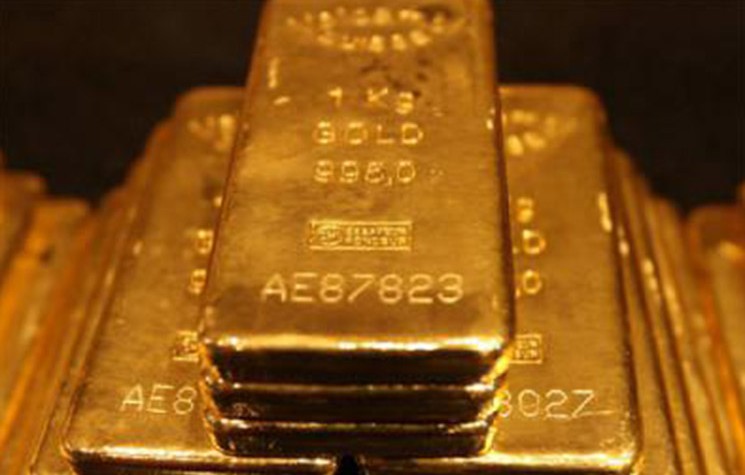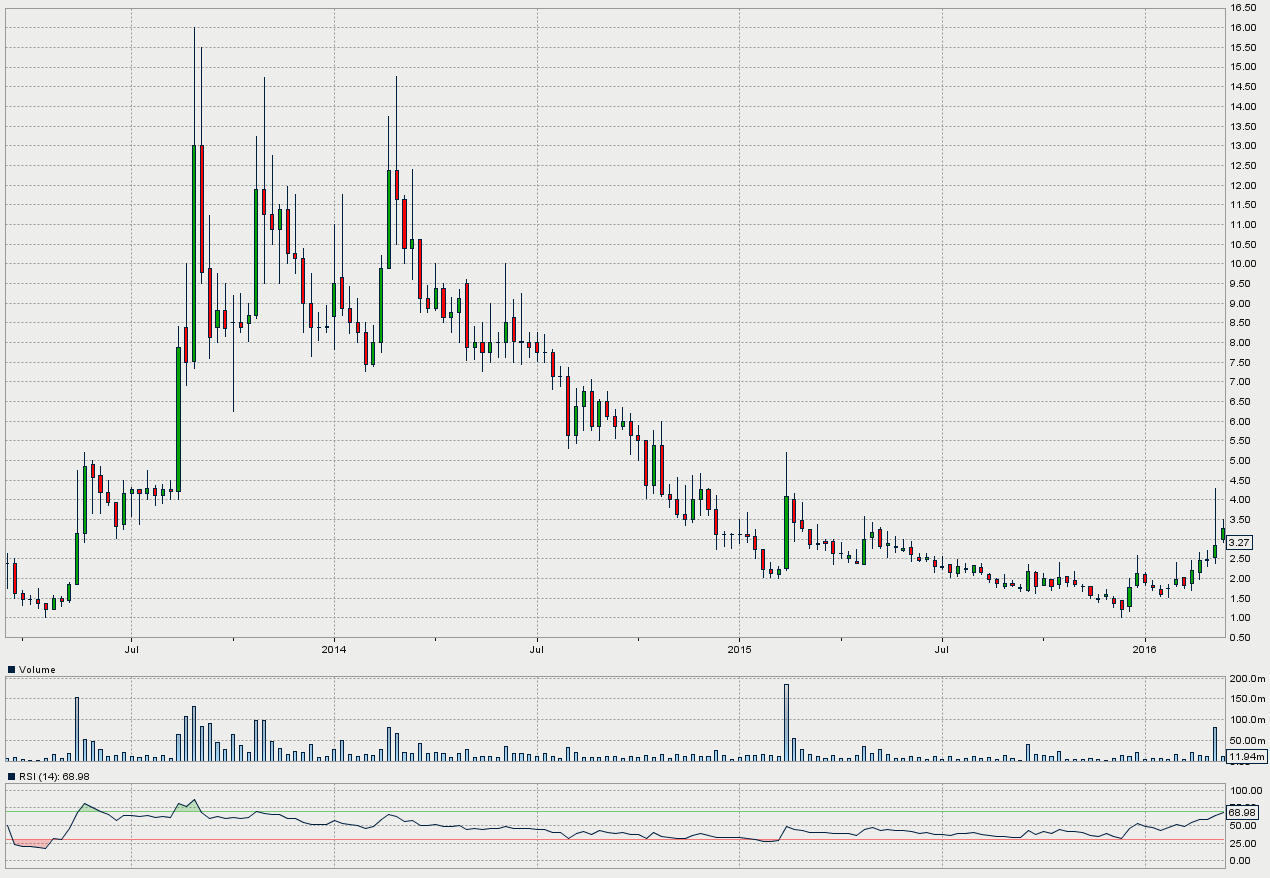Could Solgold become the biggest exploration story around?

“…one particular world-renowned expert on such porphyries believes Cascabel (Solgold’s 86% owned flagship copper-gold project in Ecuador) could be perhaps THE biggest new such discovery in the world, let alone in the Andes.”
When faced with such a comment you can either pass it by or you can pause to take a look. But you would still have to decide whether to believe it or not.
In this long bear market for mining stocks, most investors have been passing exploration companies by. And rightly so. If commodity prices are falling, it can only be because supply is thought to be outstripping demand. So even when an explorer finds gold or copper in ‘them thar hills’, the stockmarket doesn’t give a damn and his share price continues on down – if only because exploration takes money and, when spent, anything it finds is accorded little value. No one will want to develop it, so money has, literally, been thrown down a hole in the ground.
Today, judged by their market values, explorers with minerals in the ground will be lucky to have their ‘asset’ valued at more than 1-2% of that accorded by the mineral’s market price. Five years ago it might have been 5-7% or even 10%. An explorer with ‘gold in the ground’ might have been able to sell it (depending on the grades, infrastructure, ease of extraction etc.) to a producer for up to $40-70/oz – some 3% of gold’s then market price. Not any more. Ecuador’s other potential gold resource (Fruta del Norte) was sold in October 2014 for $24/resource ounce – 2% of the then gold price (probably a distressed price because seller Kinross couldn’t secure acceptable tax/royalty terms from the then Ecuador government, who is now trying to attract miners instead of repelling them). And according to Condor Gold’s advisers, an average of ten recent deals was at 4% of the gold price – but with a wide variation and the larger resources (3-5 Moz) attracting well above the average and the smaller well below.
Yet low valuations don’t look sustainable and in the long run large new gold and copper mines will be necessary to supply continuing demand. As Richard Gill showed on 8th January (“Get back into gold with Caledonia Mining“) world gold production seems to have peaked, while discoveries have fallen drastically to almost nothing since peaking in 1995. If gold demand continues level, a supply-demand crunch looks likely at just about the time Cascabel might come into production.
According to some producers the same is true of copper, although because it is difficult to judge China’s future demand, opinions vary as to when supply will become inadequate, in addition to which copper’s use as a ‘fiat’ hedging store of value adds to the difficulty of forecasting its price. According to Rio Tinto, one new mine the size of Escondida (over 30 million tonnes of copper and accounting for 5% of global production) will be needed every 15 months for the next ten years just to sustain production, quite apart from Solgold’s assertion that copper’s applications are expanding all the time. For that reason, and because finding and bringing such a mine to production takes ten to fifteen years, majors will be looking a long way ahead.
So if Cascabel does indeed turn out to be the size predicted, and because Solgold has said it doesn’t want (and can’t afford) to develop it, investors are expecting a major to eventually buy it.
At current low copper prices and based on three of the longest drill intercepts, the only one of six prospective zones within the Cascabel cluster to have been drilled so far – the Alpala Zone – alone would be worth about $60/tonne ‘in the ground’, of which copper would be 45% (55% at more normal prices). Given that Solgold is, by the end of this year, ‘targeting’ a resource of at least 500 million tonnes just at Alpala, its ‘in-ground’ value of around $30 billion if valued at 1%, would be six times Solgold’s present market cap. But as things are going, Cascabel as a whole, where only 10% of the land area has been surveyed, could be far larger.
On a similar tack, if Alpala alone turns out similar to Wafi Golpu (one of the highest grade resources in SE Asia) to which Solgold compares its potential, then ‘in-ground’ value would be £31 billion which, valued at a mere 1%, would be 10 times Solgold’s present market cap.
These, of course, are back-of-the-envelope (although Solgold’s own look more professional) musings subject to large corrections, from which will have to be deducted the costs of drilling and consultants’ reports to confirm the estimates – which will have to be funded by share placings over the next year (unless a partner comes aboard to share the cost). Assuming no such partner, as ever it will be a race between the price at which placings can be made (dependent on sentiment at the time) and the extra ‘value’ that investors will be persuaded has been achieved, to determine whether that value will outrun or be overtaken by shareholders’ dilution.


Exploration funding has already trebled Solgold’s issued shares in the 3 1/2 years since it started exploring at Cascabel and the shares have fallen accordingly. Only in November Solgold added another 8%, followed 10 days ago by 16%, raising £3.2 million to repay loans and creditors, to bring the current total to 954 million shares. Yet even this left little cash to cover a cash and exploration ‘burn’ of about £400,000 per month and rising, so investors expect another fund raise any time soon.
As for this ‘race’ against further dilution, Solgold points to the owners of recent major deposits whose shares often rocketed as their value clarified and investors flocked in. Examples are Tujuh Bukut (up 7-fold in a year) and Oyu Tolgoi (now Turquoise Hill, formerly Ivanhoe Mines) containing 2.7 billion tonnes of copper as well as gold and silver, which multi bagged while being explored. However, times might be different now. Then, investors were still following explorers. Now, especially on AIM (ASX and TSX are slightly better) superb drill results spur minor blips in the shares before they relapse again. So, rather more share dilution might occur today than would have a few years ago, and a share price might not rise by as much.
Helpfully, however, Solgold has some strong backers (but as yet few institutions) in the form of Australian financiers DGR Resources and Tenstar Trading, who have been maintaining their combined 29% stake, and the management also (unlike many) put their hands in their own pockets.
Solgold has also set out a budget for 2016 (when a preliminary resource will have been defined for Alpala alone) showing exploration and corporate spending at $12m (£8.5m compared with its current £34.3m market cap) to operate three drilling rigs against only one until recently. At worst, assuming a level share price, that would imply 25% dilution, and if, then, a resource matches the estimate that Solgold showed in its most recent presentation, of 390.4 million tonnes at a 1% cu equivalent grade (at a 0.3% Cu cut-off grade that might apply for a low cost mine), then 1% of its $16.4 billion ‘in-ground’ value would be £115m. But depending on the quality of the resource statement, investors might accord more than a 1% value.
At a 0.7% economic cut-off (it is not possible before a resource statement to judge what the economical cut-off grade – dependent on mining costs – would be) the figure would be £49m.
One concern holding investors back – apart from immediate funding – has been the perceived very high cost (several $billions) to develop Cascabel, due to the great depth (750m-1,500m) of what has been found so far. However, that is merely at Alpala, and the next priority prospect just over two miles away at Aguinaga, due for first drill this year, looks, from the soils chemistry and geophysics, to be significantly shallower, which could start off a mine with a much cheaper open pit. If drill results confirm this, then expect a boost to the shares.
I know of little research on Solgold beyond its sole broker/nomad who although recently recommending a buy has obviously had to be restrained. Useful opinion sometimes stems from 15% shareholder in Cascabel, Cornerstone Capital Resources (CGP:V), who is listed on TSX and is an expert on South American mining and whose shares often flag imminent news. Although there is no confirmation, there have been rumours that Solgold might dual list on TSX, which would probably help the share rating among the mining savvy Canadians who are more familiar with South America than are Brits.
While the shares might be held back in the short term by the funding and partner issue, as my order-of-magnitude figures show, it looks likely that as and when further good drilling results come through, the market will become more and more interested in what might during 2016 – because unlike juniors its size will interest the majors looking to the very long term – start to become the biggest exploration story around. And the long-term chart shows that, with the latest very encouraging drilling result, the cusp of the funding vs value influence on the shares might have been turned.
There are other risks than funding – one perhaps that the nearby Junin mine has for years been all but blocked by environmentalists, although the government is now trying to push it through. There is no suggestion that Cascabel might fare the same however.
Comments (0)